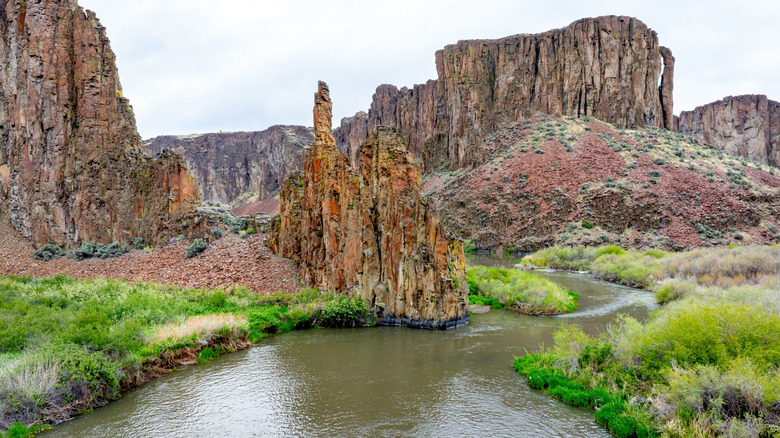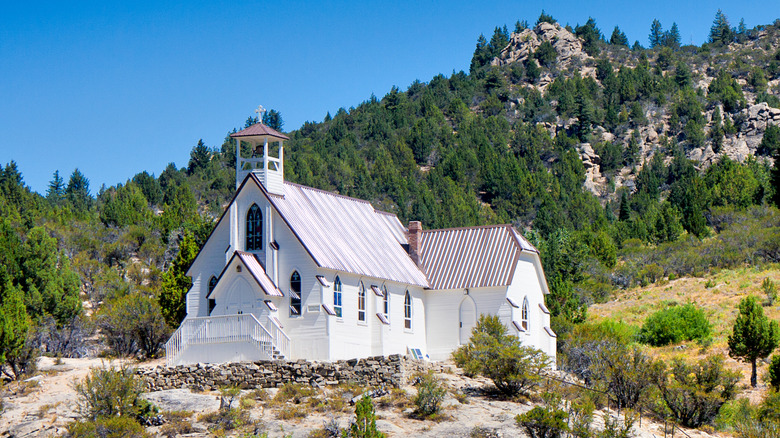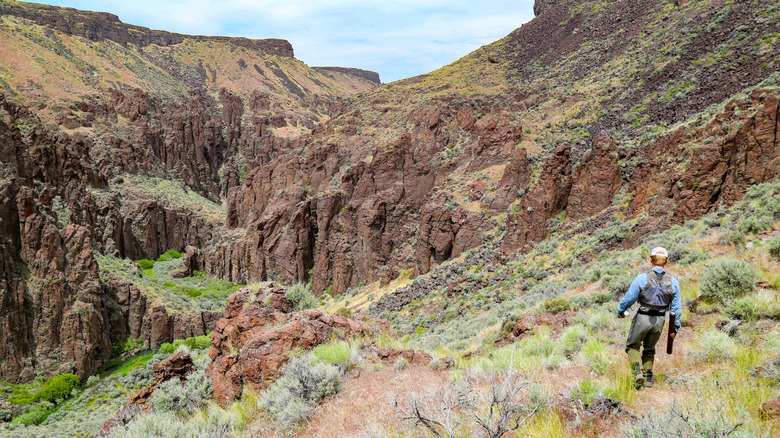These Breathtaking Canyonlands Straddling Oregon And Idaho Are Best Known As 'The Big Quiet'
For many travelers, a summer adventure means photographing or traversing some of Mother Nature's incredible works of art. Unfortunately, many of the iconic National Parks are so crowded that they require reservations in advance. If you're looking for challenging hikes, excellent fishing, breathtaking canyon views, and epic whitewater without the crowds, consider the spectacular Owyhee Canyonlands, locally known as "The Big Quiet." This largely untouched area covers nearly 9 million acres of Eastern Oregon, Southwestern Idaho, and Northern Nevada, beckoning visitors with an incredibly diverse range of geologic features, desert life, and adventurous experiences.
Early ancestors of the Bannock, Northern Paiute, and Shoshone tribes hunted and fished in the vast wilderness for thousands of years, leaving hundreds of drawings, historical artifacts, and ancient weapons as signs of human existence in the desert before trappers and settlers arrived. In the early 1800s, as fur trappers explored the western United States, three men from "Owyhee" got lost exploring the area and never returned. The British trappers in their party began calling the area "Owyhee," and the name stuck. The spelling of the name Owyhee was later standardized by missionaries as Hawaii, a bucket list destination for millions.
As the Owyhee Canyonlands stretch for hundreds of miles, there are several points of entry. The closest major metropolitan area with an airport is Boise. If you're flying in, you'll need to rent a 4x4 with high ground clearance and drive nearly 90 minutes to get to the edge of the wilderness area. Double-check that your rental car agreement permits off-road driving, or consider a specialty company such as Ribik.
What to do in the Owyhee Canyonlands
Nature lovers will find themselves in a piece of heaven on earth as they cross the high desert on foot or by OHV/ATVs. One of the primary routes runs between Grand View, Idaho, and Jordan Valley, Oregon, along the Owyhee Uplands National Backcountry Byway. This 101-mile gravel road is the main jumping-off point to hike Purjue Canyon, a relatively flat 8-mile trek in the Little Jacks Creek Wilderness area up a breathtaking slot canyon. You will cross creeks, spot an old rancher's cabin, and maybe even see a bighorn sheep! Be sure to bring a hat, water, bug spray, and sunscreen.
Experienced backcountry rafters and kayakers shouldn't miss an adrenaline rush along the Owyhee River during the spring and early summer months, with up to Class V whitewater runs, including the legendary Widowmaker Rapid. The Wild and Scenic River truly is the trip of a lifetime, with soaring canyons and bird life overhead by day, and some of the starriest skies by night. ROW Adventures runs multi-day excursions, with trips floating the easier Lower Owyhee River or taking on the remote East Fork.
Owyhee County was the first county formed in the Idaho Territory back in 1863, and quickly swelled with miners after gold was discovered. Although the prospectors are long gone, one ghost town, Silver City, a historic Catholic Church, and the historic Idaho Hotel still stand and are open during the summer tourist season.
How to prepare for your trip
As the Owyhee Canyonlands were one of the least explored regions of the continental United States, there is very little human activity and development in the region, apart from unpaved roads. Although there is real risk and danger for traveling to a desolate area, you can lower the risks by being well-prepared for your trip and communicating your plans with others. While there are few people and tons of places to camp, there are plenty of dangerous critters out there, including ticks, rattlesnakes, and even mountain lions. You'll find basic services, including gas, at both ends of the Owyhee Uplands Backcountry Byway, though at the very least, have a paper map, a spare tire, extra gas, basic provisions, and shelter, and tell someone where you will be going and when you plan to check in with them. Further, visitors going to any sections of the Owyhee River should complete and submit a self-issue permit to the BLM before putting in to the river.
The "Big Quiet" changes in elevation from 2,000 to over 8,000 feet, and the weather and temperature may fluctuate throughout the same day. Summers can be brutally hot, while winters can be bitterly cold with heavy winds and snowfall. Spring is an optimal time to visit and witness the rocky hills bloom with color, but the trails and roads can become muddy and difficult or impossible to navigate after rainfall or a thunderstorm. Once you make it back to civilization after your big adventure, dig into a well-deserved, delicious meal back in Boise, the Northwest's up-and-coming foodie destination.


